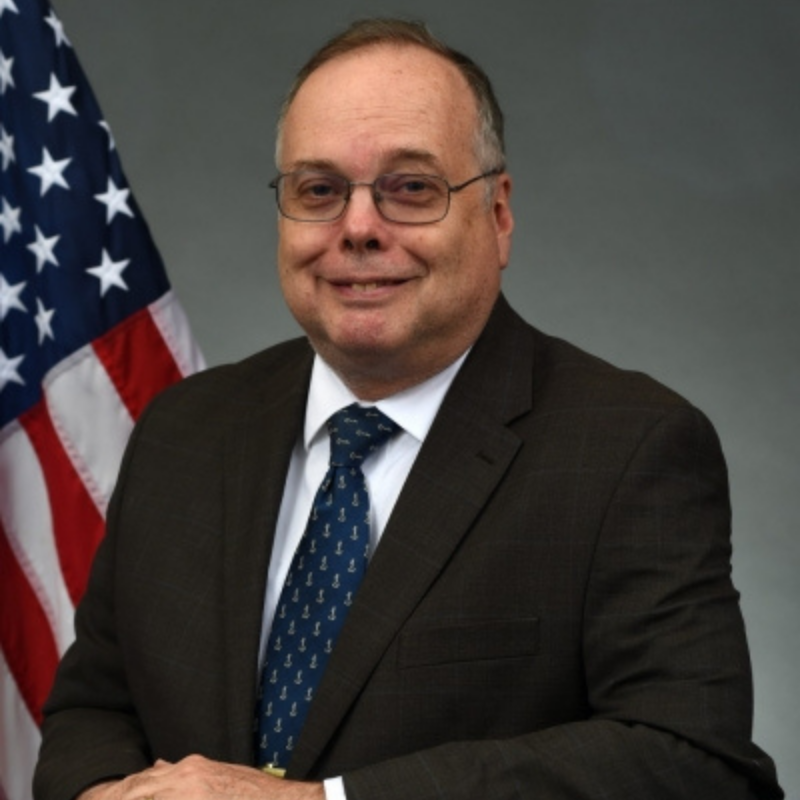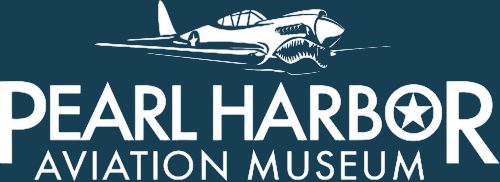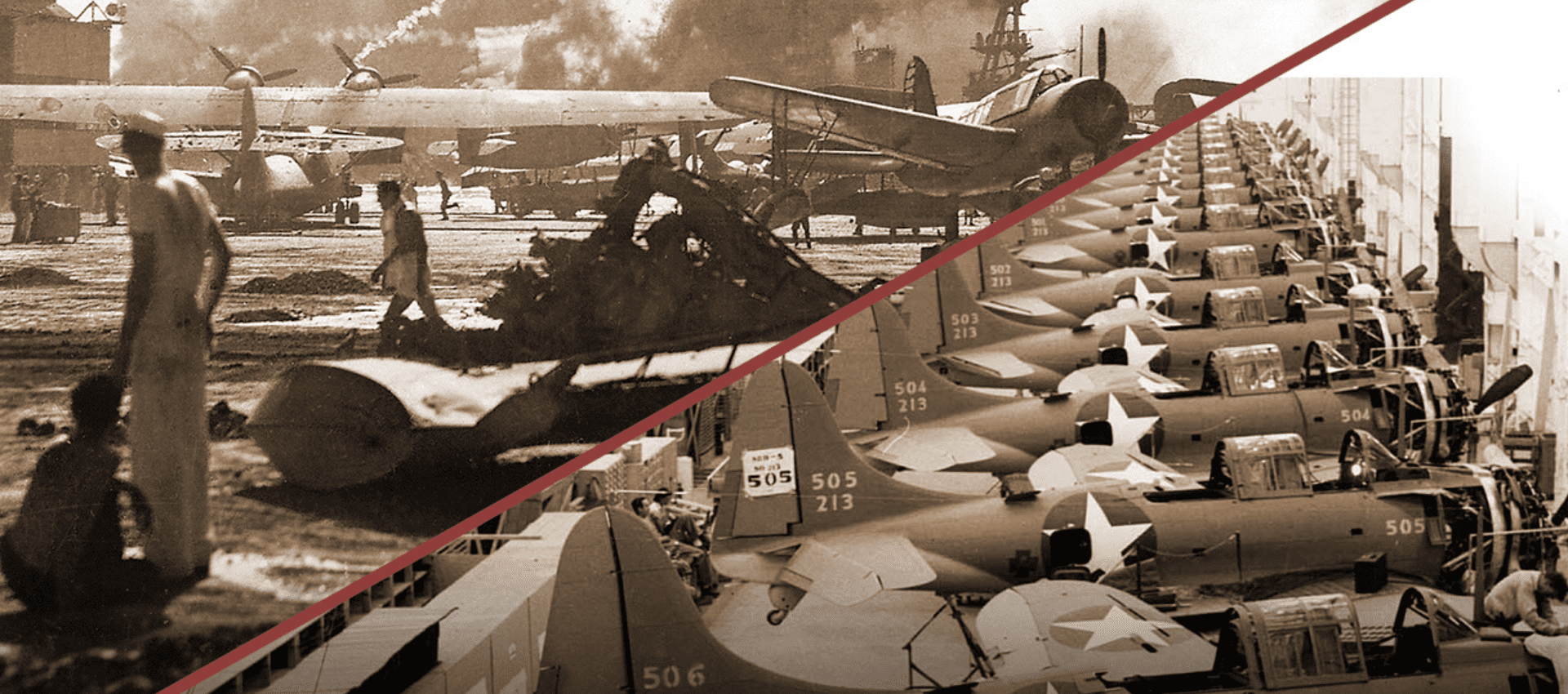Your questions about the aftermath of Pearl Harbor answered by the Director of the Naval History and Heritage Command

Rear Admiral Samuel J Cox serves as the Director Naval History and Heritage Command and Curator of the Navy. He is responsible for the Navy’s museums, art, and artifact collections, the research library, 150 million pages of archives, and for collecting and interpreting U.S. Naval history throughout the world.
RADM Samuel J. Cox joined Pearl Harbor Aviation Museum as the featured guest of Pearl Harbor Aftermath — a live webinar to discuss the shift in attitudes concerning aerial war and the rebuilding of aircraft production following the attack on Pearl Harbor.
Below is a Q&A with Rear Admiral Cox including questions he didn’t have a chance to answer live in the webinar.
Questions specific to rebuilding aircraft following the attack on Pearl Harbor.
1. Were the Hellcat and then the Mustang considered the post-Pearl Harbor fighter upgrades and can you explain what improvements these aircraft made to those in use as of December 7, 1941?A: The F6F Hellcat was the follow-up to the F4F Wildcat. Development of the Hellcat actually began well before the war, but significant modifications to the design were made based on combat experience with the Wildcat and a better understanding of the Japanese “Zero” fighter. Although there were still a few squadrons equipped with the less-capable Brewster Buffalo, the Wildcat was the primary USN carrier fighter at the start of the war.
The Zero was faster, more maneuverable, and longer-range than the Wildcat. In addition, Japanese pilots were very well trained. There was however no armor protection for the pilot and the Zero would usually turn into a flaming torch after a few hits. The Wildcat could withstand much more punishment then a Zero, had a better radio, and a very good offensive armament with six .50 cal in the wings, and in later versions, self-sealing fuel tanks. In any dogfight of Zero vs Wildcat, the Wildcat would not last long. However, with well-trained and experienced pilot using the right tactics – stressing single-pass hit and run attack from above and teamwork (such as the “Thach Weave”) – a Wildcat could make it an even fight.
The Hellcat made up for the Wildcat’s deficiencies in terms of speed and maneuverability and debuted in combat in late 1943. After that, a really good Zero pilot could make a good fight against a Hellcat, but in general the Hellcat had a very lopsided advantage (and kill-ratio) against Japanese fighters for the rest of the War. I’m not an expert in USAAF fighters, but I think a case can be made that the P-51 Mustang was the best fighter produced by anyone during the war.
2. How long before we felt able to defend with our fighter force?A: I don’t have a good answer for this. I suspect it wasn’t until after the four Japanese carriers were destroyed at the Battle of Midway in June 1942 that anyone in Pearl Harbor started to feel relatively secure against Japanese air attack.
3. Many PBY Catalinas were destroyed on the ground during the attack. At that time, most were made in San Diego. Did the factory have inventory to replace lost aircraft, or did replacements fly over from other locations on the mainland? I understand that approximately 4,000 units of this plane were produced by the Allies (even the Soviets)?A: PBY production was going full-steam before the war started, but most were going to the Atlantic area because of the ongoing undeclared war between the US and German submarines, and in anticipation that when war did break out, it would be against the Germans.
However, the result was that Pearl Harbor had an inadequate number of PBY’s to conduct thorough long-range searches from Pearl Harbor before the attack (and most of those that were there had only arrived within the previous six weeks — with inadequately trained crews and an acute shortage of spare parts). After the Pearl Harbor attack, priorities shifted, and because the PBY production line was already cranking, the PBY losses at Pearl were replaced within a couple months.
4. Quite a few ships were repurposed after the attack on Pearl Harbor, can the same be said with the aircraft damaged?A: Early in the war, if battle damage to an aircraft could be repaired, it would be repaired. Later in the war, as U.S. production ramped up and new aircraft became plentiful, the decision to repair (or to jettison over the side) became more a function of how much trouble it was worth and how quickly the carrier needed to clear space on the flight deck.
Early in the war, aircraft mechanics would salvage parts from badly damaged aircraft in order to keep less-damaged aircraft flying, and were quite resourceful at keeping damaged planes in the fight.
5. What were the new focuses on the development of aircraft following Pearl Harbor: range, ceiling, speed, armament, etc.? All of the above?A: In the case of the Navy, the F6F Hellcat and F4U Corsair were developed and modified specifically to defeat the Japanese A6M “Zero” fighter (and subsequent Japanese Navy fighters) with superior speed, maneuverability, and survivability.
Questions about the attack on Pearl Harbor
1. The official US Army history global logistics and strategy has info on this subject but not a lot of detail. What history sources go into the most detail?A: Actually, I had a hard time finding good open-domain sources on the period after Pearl Harbor. My archivists were able to find original reports In the Navy archives that provided numbers of USN aircraft in Hawaii at periodic Intervals. For USAAF, all I could find was official USAAF history of 7th Air Force which listed numbers in 7th Air Force, which would be fairly accurate in the first months of the war, but as the war progressed more and more 7AF aircraft would have been based forward. As for Navy, the book “The First Team” by John Lundstrom, although focused on fighters, is the most detailed account of USN carrier aviation between Pearl Harbor and Midway, as to available aircraft and pilots (and losses thereof.)
2. How soon after the 1st wave had attacked were we able to get our aircraft airborne? Secondly, did we lose aircraft to friendly fire?A: No USN fighter aircraft got airborne during the attack. Several USAAF P-40’s got airborne from outlying fields (such as Haleiwa) before the second wave and probably accounted for about 10 of the 20 Japanese aircraft lost during the second wave (out of 29 during the entire attack.)
At least one of the SBD Dauntless dive bombers arriving from USS ENTERPRISE during the attack was shot down by friendly fire (others were shot down by Japanese.) In addition, four of six ENTERPRISE Wildcat fighters attempting to land at Ford Island after nightfall were shot down or crash-landed as a result of being hit by friendly fire.
3. What ships and Navy aircraft were at sea patrolling for IJN ships north and west of Pearl Harbor on the morning of Dec. 7, 1941?A: The LEXINGTON was operating north of Oahu in late November in almost the same position that the Japanese carriers launched from, but the exercise was truncated based on orders from Washington. On 7 December, the LEXINGTON and her task group were northwest of Oahu heading to Midway Island to deliver USMC dive bombers; she turned around upon notification of the attack and the dive bombers flew to Midway escorted by PBY in what was then longest overwater flight by U.S. military single engine aircraft.
ENTERPRISE and her group were west of Oahu returning after delivering USMC fighters to Wake Island. Admiral Halsey, on ENTERPRISE, had given orders for ships to be in wartime steaming condition and any Japanese encountered to be considered hostile.
The heavy cruiser USS INDIANAPOLIS and several smaller ships were southwest of Oahu returning from gunnery practice and other exercises at Johnston Island.
Supply ship USS ANTARES was approaching the Pearl Harbor Defensive Sea Zone returning from delivering US Army engineers to Baker Island where they were building an airfield. ANTARES’ crew thought they were being followed by a Japanese submarine during the transit; although not confirmed, ANTARES may have crossed paths with one of the Japanese submarines approaching Oahu from the Marshall Islands. On the morning of 7 December, ANTARES was definitely being followed by one of the five Japanese midget submarines that attempted to enter Pearl Harbor just prior to the air attack. The destroyer USS WARD, which was the duty patrol vessel off the entrance to Pearl Harbor sank the midget submarine (so technically at Pearl Harbor we fired first, although the Japanese first wave was already in the air and the second wave was launching.)
Several PBY’s were searching to the south and southwest of Oahu the morning of 7 December, consistent with the belief that was the primary axis of approach for Japanese submarines (and it was.) PBYs were on search/training missions north and west of Oahu on 5 Dec, but the weather forecast for 7 Dec made searching north of Oahu not likely to be fruitful due to the undercast. PBY’s searching north of Oahu on 7 Dec would have been unlikely to see the Japanese carrier force (under the clouds) but might have seen the incoming Japanese air strike which might have provided perhaps a half hour warning.
The Japanese strike leader (Fuchida) was worried they might fly past Oahu (hidden below the clouds) because of the undercast, but the cloud cover cleared just as the strike neared the northern point of Oahu so the first wave had clear skies for the attack.
4. I have read various opinions that the attack on Pearl was designed such that it would destroy the USN and bring the USA to some form of ‘negotiated settlement’. But I have never heard of any Japanese delegate or representative approach the US Government to start such a discussion. Did this (a Japanese offer to settle) ever occur?A: The Japanese government and senior military were actually split on this. The Japanese Army thought they could win. The Japanese Navy, and Yamamoto in particular, understood, that they were essentially trying to buy time to play for a tie. The Navy leaders knew that they could not compete with the industrial capability of the U.S., so the idea was to damage the Pacific fleet so badly that the U.S. would agree to negotiations…but the Japanese did not intend to initiate negotiations, so no, there was no proposal from the Japanese.
Late in the war, the Japanese correctly assessed that the critical U.S. center of gravity was the willingness of the American public to tolerate massive casualties. Thus the Japanese strategy late in the war was to inflict as many casualties as possible to convince the US not to invade Japan and compel the U.S. to negotiate, although even then the Japanese would not initiate negotiations. At the Potsdam Conference the Allies laid out conditions for ending the war with Japan (despite the so called “unconditional surrender” war aim.) The Japanese responded to the Potsdam declaration in circuitous fashion, mostly via the Swiss, and thereby “negotiated” the terms of their surrender.
5. Not specific to the rebuilding of US airpower in the region but as we all know “tora tora tora” was the code message to confirm surprise. Does anyone know what message was to be transmitted if the Japanese had been greeted by 100 angry US fighter aircraft and the Pacific Fleet was clearing the harbor?A: That’s a great question and I have never heard the answer. Besides the radio transmission, Fuchida was supposed to fire one flare if surprise was achieved and two flares if not. The Japanese dive bombers and fighters had different target sets depending on which signal was received.
Fuchida fired one flare, but then thought that one of his sections didn’t see it, so then he fired a second flare which confused everyone else, so some aircraft attacked the “surprise” target set and some attacked the “no surprise” target set, so essentially the first wave got all screwed up….but it was the first torpedo bombers that got through essentially unscathed that did the vast majority of damage, except for the lucky bomb that hit the USS Arizona in the worst place.
The second wave was actually even more fouled up than the first due to cloud cover, smoke and anti-aircraft fire which caused the Japanese dive bombers not to be able to see their targets while in a dive, resulting in the abysmal accuracy of the second wave
Questions about Naval Responses and conflicts following the attack on Pearl Harbor.
1. Did Admiral Kimmel deploy ships, submarines, and aircraft, in addition to USAAF, to look for the IJN to the north and northwest in addition to the submarines off Wake and Midway?A: Yes, but too late. The reports by the Opana radar station never reached Kimmel during the battle (this was the flight mistaken as incoming B-17’s from CONUS but was actually the Japanese strike from the north.) The Japanese also looped around Oahu and made their final attack runs on Pearl Harbor from the south in order to disguise their true point of origin.
Intelligence available to Kimmel before the battle indicated a build-up of Japanese submarines in the Marshall islands (southwest of Pearl). Kimmel believed Japanese submarine activity would precede any air attack on Pearl Harbor, which is why he issued the shoot on sight orders before the battle – and he was right, except the Japanese carefully timed the arrival of submarines for the night before the attack. Additional erroneous sighting reports during the battle indicated the Japanese were operating south of Oahu. The radio-direction finding bearing indicated the Japanese were either due north or due south (with only one line of bearing it was not possible to tell which of two opposite directions was the source – it takes a second line of bearing from a second direction-finding station to resolve this ambiguity and obtain a two-bearing fix.)
The cumulative effect of all of this was that initial searches and attempts at a counterstrike by USS Enterprise aircraft were focused to the south. It wasn’t until a chart was recovered from the body of a downed Japanese pilot that the true origin, north, of the strike was determined, and by that time it was too late. Any counterstrike probably would not have fared well against Japanese fighter combat air patrol anyway.
2. Why did the United States war planes get caught on the ground in the Phillipines? Weren’t they warned given the attack on Pearl Harbor happened 1-2 days earlier?A: One big factor was that fog on Formosa delayed the Japanese launch by several hours, and by the time the Japanese actually showed up over the Philippines, many U.S. fighters, that had been launched in anticipation of an attack, were either running low on fuel or back on the ground refueling.
The fact that the B-17’s got caught on the ground probably has more to do with MacArthur’s inexplicable actions in refusing the bombers to launch for a pre-emptive strike on Formosa (i.e., upon word of Pearl Harbor the USAAF commander in Philippines wanted to launch immediately against the Japanese airfields on Formosa, but was unable to gain direct access to MacArthur.)
Obviously, the destruction of U.S. airpower in the Philippines, despite warning of the attack on Pearl Harbor (and warning via decrypted Japanese diplomatic communications that MacArthur and ADM Hart were receiving (that Kimmel wasn’t), remains to this day one of the most hotly debated controversies of the war.
3. Why was the Japanese retaliation from the Doolittle Raid so weak? Floatplanes, inaccurate bombing on Pearl, and few submarine attacks on west coast USA?A: In the initial months of the war, the Japanese were deliberately restrained in conducting attacks on the U.S. mainland, so as not to provoke retaliation. The Japanese well understood that their cities were tinderboxes and their antiaircraft defenses inadequate.
The Commander of the Japanese Combined Fleet, ADM Yamamoto, was planning the Midway operation before the Doolittle Raid, but the Doolittle Raid enabled Yamamoto to bulldoze any opposition from the Navy General Staff against the Midway operation.
Although the Doolittle Raid targeted military facilities and was specifically prohibited from hitting the Imperial Palace, a number of Japanese civilians were killed. Japanese propaganda blew the civilian casualties all out of proportion, with the result being in Japanese minds that the U.S. were the “baby killers” first (the captured Doolittle Raiders which were executed were from the plane that inadvertently shot up a school-yard.)
The result at sea was that Japanese ships, which early in the war would often rescue Allied sailors from sunken ships, adopted a “no quarter” mentality, which came to characterize both sides as the war progressed.
The Japanese did retaliate for the Doolittle raid in a big way — against the Chinese (who had not been notified of the raid in advance). Chiang-kai Shek claimed over 250,000 Chinese were killed by the Japanese in retaliation for Chinese assistance to the raiders after they landed (by parachute) in Chinese territory. This number is hard to verify, but there is no doubt that many thousands of Chinese died as a result of a U.S. “morale boost” raid.
4. What is your opinion on how successful the Black Shoe admirals (i.e. Fletcher, Kinkaid, and Spruance) were as carrier task group commanders in conducting carrier operations and the naval air war in the Pacific? It seems like they did quite well in the carrier battles.A: This question will still start a food fight in the Navy today. The “battleship” admirals were not the troglodytes that are often depicted.
The battleship admirals fully understood the threat posed by aircraft, especially those that carried torpedoes. The problem was that in exercises (Japanese too), the opposing carriers would knock each other out in the opening day (or be ambushed by opposing cruisers at daybreak) and be “sunk,” and then the battleships would conduct the decisive battle afterwards.
Carriers were described as “prizefighters with a knockout punch and a glass jaw.” This assessment was essentially correct given that of the six US pre-war carriers that served in the Pacific, four were sunk and USS Saratoga spent a lot of time In repair. On the Japanese side, four of their six “fleet” carriers were sunk In the first year, and Shokaku spent a lot of time In repair.
On the U.S. side, Fletcher (not an aviator) arguably “won” the first three of four carrier vs. carrier actions in 1942 (Coral Sea, Midway, and Eastern Solomons.) Others might argue it was more like 1-0-2 (one win, two ties). With 20/20 hindsight, Fletcher made a number of potentially costly mistakes in each of these battles, but given that these were the first such battles In history, not sure anyone else would have done much better. At Coral Sea, Fletcher turned over tactical command of the air battle to Aubrey Fitch (an aviator) and at Midway (due to damage to USS Yorktown) Fletcher relinquished tactical control to Spruance (not an aviator.)
Spruance would be heavily criticized by aviators for a number of tactical decisions and for not pursuing the Japanese after the first day of Midway (had he done so he probably would have run into a night fight with Japanese battleships and heavy cruisers and got his clock cleaned.) Spruance would also be heavily criticized by aviators for his actions in the Battle of the Philippine Sea by tethering the carriers to the landings. Spruance believed that his primary mission was to ensure the success of the landings, while the aviators believed their mission was to roam far and seek out the Japanese carriers.
At the subsequent Battle of Leyte Gulf, Halsey (an aviator) did what the aviators wanted and wound up chasing after the Japanese carriers, which were a decoy force, while Japanese battleships snuck in behind and nearly caused a catastrophe to the Leyte landings, which was exactly the action Spruance wanted to prevent in the Philippine Sea/Marianas landings. With 20/20 hindsight, the Japanese didn’t really have a realistic chance of getting into the landings in the Marianas, and had the U.S. carriers been given free rein there likely wouldn’t have been a Japanese carrier “decoy force” left by the time of Leyte Gulf.
In the end, Fletcher and Spruance both achieved their mission objectives; maybe aviator admirals could have done it better and faster, but there is no way of knowing.
5. I am interested in knowing more about the role of the PB4Y Privateers in 1945 in the last few months of the war in the South Pacific. Could you talk about their role and possibly how they worked with the submarines at that time?A: This is a good question, and actually I don’t know a lot off-hand. The PB4Y-2 was a navalized version of the B-24 Liberator bomber, modified for low-altitude search and anti-submarine operations, and with an even heavier defensive armament. Since it often operated alone on long-range reconnaissance, although the original B-24’s and the slightly modified PB4Y-1 operated effectively in anti-submarine operations in the Atlantic, the B-24 (and PB4Y-1) were optimized for high-altitude bombing by larger formations of bombers.
I know one PB4Y-2 squadron operated from the Marianas and one from the Philippines, with extensive operations in the South China Sea, East China Sea and off the East Coast of Japan as far north as the Aleutians. There may have been more squadrons arrive just before the end of hostilities.
I did a search on combinedfleet.com (a site that has very detailed records of movements of Japanese ships and submarines,) and there were a number of encounters between Japanese submarines and PB4Y-2 aircraft late in the war, although I didn’t see any jump out where a PB4Y-2 sank any. Most of the references were to Japanese submarines spotting, and diving to avoid, PB4Y-2 aircraft.
The book “Above an Angry Sea: United States B-24 and PB4Y-2 Privateer Operations in the Pacific (October 1944 to August 1945) by Alan C. Carey looks like a pretty good source for more info, although I haven’t read it.
Pearl Harbor Aviation Museum is proud to present our hour long webinar, Pearl Harbor Aftermath: Salvaging Air Power, diving into the reconstruction and rebuilding of U.S. Aircraft following the attack on Pearl Harbor featuring Samuel J. Cox.


